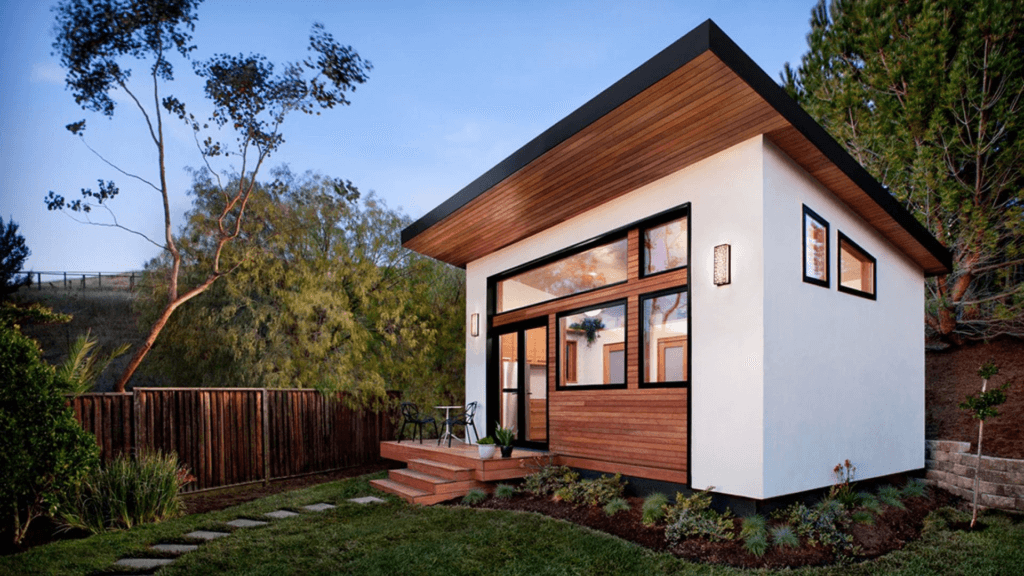
By JONATHAN LEE,, Austin Monitor
In response to rising housing costs, Austin City Council proposed several changes to allow accessory dwelling units in more neighborhoods including Four Points (see page 5) and to make them easier to build.
ADUs are set to become legal in Single Family Residence-Large Lot (SF-1) and Single Family Residence-Standard Lot (SF-2) zones – but only if the existing home is left intact (a requirement intended to discourage tear-downs). ADUs are currently allowed on most lots zoned Family Residence (SF-3).
Occupancy restrictions, another big barrier to ADU construction, are set to be removed. Current code requires attached or internal accessory units – think granny flats or above-garage apartments – be occupied by an elderly or disabled person or a family member. Since anyone will be able to live in all types of accessory units, internal and attached ADU construction is likely to surge. Council will also overturn a ban on garage conversions.
Beyond being allowed in more places, ADUs may soon become easier and cheaper to build. Council Member Kathie Tovo’s resolution directs city staff to explore creating pre-approved ADU blueprints for public use. Staffers will present the details of such a program by Feb. 1.
The resolution, which passed unanimously on December 9, builds on a 2015 rule change that allowed ADUs on most lots zoned SF-3 and relaxed other regulations. After that rule change, ADU construction has increased every year, according to data through 2019. Council passed an ADU resolution last year that prompted a thorough city staff report on barriers to ADU construction in the city.
Council members hoped the proposed changes will allow more housing options for all residents. “Our middle-income earners, they’re going to win the most here,” Mayor Pro Tem Natasha Harper-Madison said. “But I also think this makes housing attainable across the city for our lower-income earners.”
The resolution also directs staffers to work with third-party lenders to create loans for ADU construction. Not being able to finance construction prevents many middle- and lower-income Austinites from building ADUs, according to the city staff’s report.
Despite the unanimous vote, there were still concerns. Some Council members questioned a part of the resolution that directs staff to study scaling allowable ADU size to lot size. Harper-Madison worried that even though such a rule might produce smaller, more affordable units, those ADUs could be less attractive to families or could prevent people from living with roommates – the only way some can afford to live in Austin in the first place.
Some members also weren’t satisfied with the resolution’s scope. “Obviously, I’d like us to go further than this,” Mayor Steve Adler said, adding that Council, for now at least, is only considering consensus land use policies in order to make progress on housing policies without the divisiveness that has marred past efforts.
Council’s land use truce could end next year. Some members look likely to pursue more drastic policies aimed at increasing housing supply, including those regarding ADUs. Both Adler and Harper-Madison last month expressed interest in other code amendments designed to make ADUs easier to build. These could include reducing or eliminating parking and paved driveway requirements for ADUs or allowing ADUs on smaller-than-normal lots. Stakeholders including the Austin Board of Realtors and HousingWorks Austin have recommended ADU changes that were not in Tovo’s resolution.
Council members also discussed cracking down on ADUs used as short-term rentals. “They are taking up housing stock in some of our most central neighborhoods,” Tovo said. While city ordinance mostly prohibits ADUs from becoming STRs, members complained about lax enforcement and wondered if new rules could give the city more teeth. Council may discuss their options soon with the city’s Law Department.
The Austin Monitor, an online, nonpartisan, 501(c)3 nonprofit publication that covers local government and politics in and around Austin.
ADUs in Four Points
Linda Bailey, who’s lived in Glenlake for 25+ years and is president of the Lake Austin Collective, shares comments on Accessory Dwelling Units and how that will affect the Four Points area.
In December 2021 the Austin City Council unanimously proposed allowing Accessory Dwelling Units in many more neighborhoods and making them easier to build.
The city defines an Accessory Dwelling Unit, or ADU, as a secondary, usually smaller unit on a property with a primary house. It is self-contained with its own bathroom and kitchen. ADUs come in all shapes and sizes and can include stand-alone one-story and two-story units as well as those above garages.
ADUs have not been allowed on most lots in the Four Points area – such as some in Jester, Steiner Ranch, RiverPlace, Glenlake, Shepherd Mountain and Westminster Glen. Specifically, they are not allowed on Single Family Residence Lots zoned SF-1, SF-2 or Rural Residential RR zoning (to look up the zoning of a lot, go to www.austintexas.gov/GIS/PropertyProfile/ or call the Development Assistance Center at (512) 974-6370.)
Now ADUs will be allowed in SF-1 and SF-2 zoning. Different types of units require different lot sizes, parking requirements, and other regulations. The City rules can be onerous, so the City Council is looking closer at reducing barriers such as including financial incentives and allowing pre-approved architect plans.
The City Council is considering the change in order to increase overall housing supply options and potential decrease housing costs. Neighbors have expressed optimism about building a home and renting it for income despite the high costs of building an ADU or for use by elderly parents or caretakers.
Other neighbors have not been optimistic because of the increase in traffic, reduced privacy by a second story ADU 10 feet from their property line, on street parking, noise, green space removal and the use of ADUs as short term rentals.


